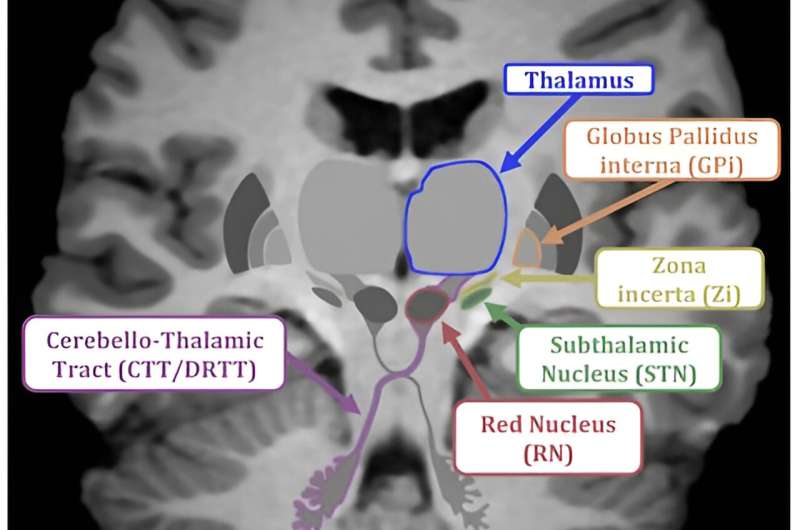This article has been reviewed according to Science X's editorial process and policies. Editors have highlighted the following attributes while ensuring the content's credibility:
fact-checked
trusted source
proofread
Brain stimulation decreases involuntary shaking, researcher finds

Neurosurgical treatment with deep brain stimulation in a relatively new target area has been shown to relieve involuntary tremors in Parkinson's disease and Essential Tremor for up to at least five and 10 years after treatment initiation. In addition, by using this target area, the operation could be performed under general anesthesia. This is shown in a thesis by Rasmus Stenmark Persson at Umeå University.
Deep Brain Stimulation (DBS) involves permanently implanting one or two electrodes in different target areas of the brain and into a neuropacemaker that is placed under the skin on the chest. With continuous electrical stimulation, it is possible to adjust pathological signal patterns in the brain and relieve symptoms such as tremors.
The traditional target of tremors, a structure called the thalamus, is not visible on magnetic resonance imaging (MRI). DBS surgery for tremors is therefore usually performed while the patient is awake in order to confirm the correct electrode placement with the help of, among other things, test stimulation.
Several smaller studies have shown that DBS targeting a new target area, a structure called the caudal zona incerta (cZi), both relieves tremors and improves fine motor skills in patients with Parkinson's disease and Essential Tremor.
Since the cZi is located in close proximity to structures visible on MRI, it is possible to confirm a good electrode position with the help of X-rays, which enables surgery under general anesthesia. However, these studies have been conducted with non-blinded evaluations, without a control group and with relatively short follow-up, which limited the scientific strength of the results of these studies.
For the first time, the positive effect of cZi-DBS on motor symptoms and quality of life in patients with Parkinson's disease has been demonstrated in a randomized, blinded treatment study. cZi-DBS had a very good effect on tremors, a moderate effect on fine motor skills and improved quality of life.
"In two long-term studies, we saw that the tremors were significantly alleviated for at least five years after surgery for patients with Parkinson's disease and 10 years for Essential Tremor. We also analyzed the one-year result of cZi-DBS for essential tremor and compared patients who underwent awake surgery with those who underwent surgery under general anesthesia and saw similar effects and complications between the different surgical methods," says Persson, who defends his thesis at Umeå University on Friday, 8 December.
Nerve pathways involved
"By analyzing the position of the electrode in the brain and creating simulations of the electric field around the electrodes, we were able to map which structures were affected by the stimulation."
The survey showed that the stimulation was concentrated in an area that included both the zona incerta and adjacent nerve pathways from the cerebellum to the thalamus. These neural pathways have previously been shown to be involved in the disease mechanism behind tremors in both Parkinson's disease and essential tremor.
Increased accuracy
A more objectively confirmed efficacy of cZi-DBS in Parkinson's disease means that there is now an additional target area to use for DBS in this disease. For the first time, it has been shown that the effect on the tremors lasts for several years after surgery, even for essential tremor. Along with similar efficacy between anesthetized and awake surgery, there are now several advantages to using cZi as a target for DBS instead of the traditional target in the thalamus.
"We believe that the fact that the surgery is performed under general anesthesia can increase the accuracy of the operation, potentially reduce complications and improve the experience of the surgery for the patients," says Persson.
More information: Deep brain stimulation targeting the caudal zona incerta as a treatment for parkinsonian and essential tremor. umu.diva-portal.org/smash/record.jsf?pid=diva2%3A1811465&dswid=-6556




















